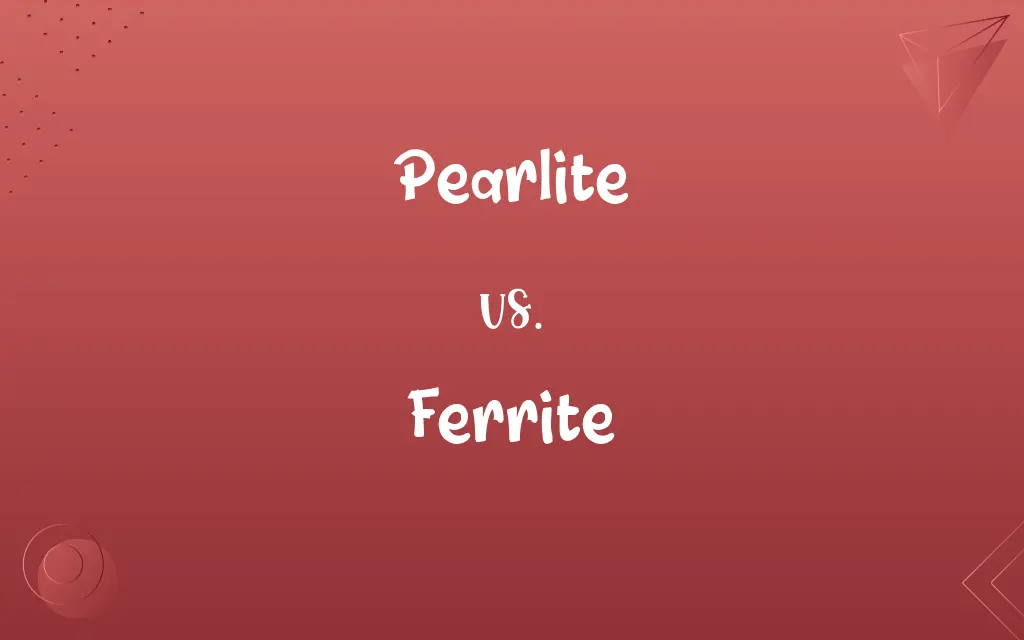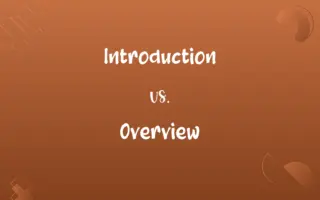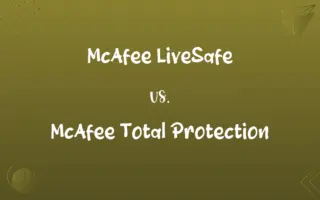Pearlite vs. Ferrite: Know the Difference

By Shumaila Saeed || Updated on January 9, 2024
Pearlite is a mixture of ferrite and cementite in steel, forming distinct layers, while ferrite is a pure iron phase, soft and ductile.

Key Differences
Pearlite is a microstructure in steel consisting of alternating layers of ferrite and cementite, providing a balance of strength and ductility. Ferrite, on the other hand, is a pure iron phase with a body-centered cubic (BCC) structure, characterized by its softness and ductility. Pearlite forms through a eutectoid reaction, while ferrite exists in steel at room temperature.
Shumaila Saeed
Jan 09, 2024
In terms of mechanical properties, pearlite offers a combination of strength and toughness, making it ideal for various applications like rails and blades. Ferrite, being softer and more ductile, is often found in low-carbon steels and is desirable for its formability. The presence of pearlite increases the hardness of steel, unlike the softer ferrite phase.
Shumaila Saeed
Jan 09, 2024
Pearlite's unique layered structure is a result of slow cooling in the steel, which allows the carbon to form separate ferrite and cementite layers. Ferrite, with its lower carbon solubility, forms when carbon content in steel is minimal and cooling is relatively faster. Pearlite contributes to the wear resistance in steel, a property not as pronounced in ferrite.
Shumaila Saeed
Jan 09, 2024
The proportion of pearlite and ferrite in steel determines the steel's overall characteristics. High pearlite content increases strength and hardness, suitable for high-stress applications. High ferrite content, however, makes the steel more ductile and easy to weld, useful in structural applications. Pearlite is beneficial in applications requiring a balance of strength and ductility, while ferrite is preferred for its malleability.
Shumaila Saeed
Jan 09, 2024
In heat treatment processes, the formation of pearlite or ferrite can be controlled by adjusting cooling rates and carbon content. Pearlite is formed at lower temperatures during the slow cooling of high carbon steel, whereas ferrite forms at higher temperatures and in steels with lower carbon content. Understanding the formation of these microstructures is crucial in steel manufacturing to achieve desired properties.
Shumaila Saeed
Jan 09, 2024
ADVERTISEMENT
Comparison Chart
Composition
Alternating layers of ferrite and cementite.
Pure iron phase with low carbon content.
Shumaila Saeed
Jan 09, 2024
Formation
Forms through a eutectoid reaction in steel.
Forms at higher temperatures in steel.
Shumaila Saeed
Jan 09, 2024
Carbon Content
Higher carbon content compared to ferrite.
Lower carbon solubility.
Shumaila Saeed
Jan 09, 2024
Application
Used in applications needing strength and wear resistance.
Suitable for applications requiring ductility and formability.
Shumaila Saeed
Jan 09, 2024
ADVERTISEMENT
Pearlite and Ferrite Definitions
Pearlite
Pearlite is formed by the slow cooling of steel with medium to high carbon content.
Pearlite formation is key in creating strong yet flexible steel rails.
Shumaila Saeed
Jan 09, 2024
Ferrite
Ferrite has a body-centered cubic crystal structure.
The microstructure of ferrite is visible under high magnification.
Shumaila Saeed
Jan 09, 2024
Pearlite
Pearlite is a layered microstructure in steel, offering strength and ductility.
The cutting edge of the blade is enhanced with pearlite for durability.
Shumaila Saeed
Jan 09, 2024
Ferrite
Ferrite forms in steel when carbon content is minimal.
Low-carbon steel mainly consists of the ferrite phase.
Shumaila Saeed
Jan 09, 2024
Pearlite
Pearlite contributes to the hardness and toughness in steel alloys.
High-pearlite steel is often used in construction for its strength.
Shumaila Saeed
Jan 09, 2024
ADVERTISEMENT
Ferrite
Ferrite is prevalent in mild steels and is easy to machine.
The car's body panel, made of mild steel, contains a high amount of ferrite.
Shumaila Saeed
Jan 09, 2024
Pearlite
Pearlite is essential in applications where a balance of strength and ductility is needed.
Tools requiring both hardness and flexibility are made with pearlite.
Shumaila Saeed
Jan 09, 2024
Ferrite
Ferrite is desirable for its formability in various steel applications.
Ferrite is often used in steel for construction due to its malleability.
Shumaila Saeed
Jan 09, 2024
Pearlite
A mixture of ferrite and cementite forming distinct layers or bands in slowly cooled carbon steels.
Shumaila Saeed
Oct 19, 2023
Ferrite
Ferrite is a soft, ductile iron phase with low carbon content.
Ferrite's ductility makes it ideal for crafting metal art pieces.
Shumaila Saeed
Jan 09, 2024
Ferrite
Any of a group of nonmetallic, ceramiclike, usually ferromagnetic compounds of ferric oxide with other oxides, especially such a compound characterized by extremely high electrical resistivity and used in computer memory elements, permanent magnets, and various solid-state devices. Also called ferrate.
Shumaila Saeed
Oct 19, 2023
Pearlite
A two-phased lamellar structure composed of alternating layers of alpha ferrite and cementite that occurs in some steels and cast irons, having a pearlescent appearance.
Shumaila Saeed
Oct 19, 2023
Ferrite
Iron that has not combined with carbon, occurring commonly in steel, cast iron, and pig iron below 910°C.
Shumaila Saeed
Oct 19, 2023
Ferrite
The interstitial solid solution of carbon in body-centered cubic iron.
Shumaila Saeed
Oct 19, 2023
Pearlite
A glassy volcanic rock of a grayish color and pearly luster, often having a spherulitic concretionary structure due to the curved cracks produced by contraction in cooling. See Illust. under Perlitic.
Shumaila Saeed
Oct 19, 2023
Ferrite
Any of a class of metal oxides which show ferrimagnetism; used in transformers, inductors, antennas, recording heads, microwave devices, motors and loudspeakers.
Shumaila Saeed
Oct 19, 2023
Pearlite
A lamellar mixture of cementite and ferrite formed during the cooling of austenite; a micro-constituent of steel and cast iron
Shumaila Saeed
Oct 19, 2023
Ferrite
(inorganic compound) The anion FeO22-, and any of the salts (formally derived from the unknown ferrous acid) derived from it.
Shumaila Saeed
Oct 19, 2023
Pearlite
Pearlite consists of alternating layers of ferrite and cementite.
The distinct layers of pearlite give the steel a unique microstructure.
Shumaila Saeed
Jan 09, 2024
Repeatedly Asked Queries
What is the primary characteristic of pearlite?
Pearlite is characterized by its strength and toughness due to its layered structure.
Shumaila Saeed
Jan 09, 2024
Can the proportion of pearlite in steel be altered?
Yes, by adjusting the cooling rate and carbon content during steel processing.
Shumaila Saeed
Jan 09, 2024
What role does ferrite play in the mechanical properties of steel?
Ferrite enhances the ductility and machinability of steel.
Shumaila Saeed
Jan 09, 2024
Is ferrite corrosion resistant?
Ferrite has moderate corrosion resistance, but it's not as resistant as some other steel phases.
Shumaila Saeed
Jan 09, 2024
What applications are ideal for pearlite-rich steel?
Applications requiring a balance of strength and flexibility, like springs and blades, are ideal for pearlite-rich steel.
Shumaila Saeed
Jan 09, 2024
Is ferrite found in all types of steel?
Ferrite is present in most types of steel, especially those with low carbon content.
Shumaila Saeed
Jan 09, 2024
What makes pearlite different from cementite?
Pearlite is a mixture of ferrite and cementite, whereas cementite is a hard, brittle iron carbide.
Shumaila Saeed
Jan 09, 2024
How does ferrite affect the weldability of steel?
The presence of ferrite improves the weldability of steel due to its softness.
Shumaila Saeed
Jan 09, 2024
Can the amount of pearlite in steel be increased for more strength?
Yes, increasing carbon content and adjusting cooling rates can increase pearlite content for greater strength.
Shumaila Saeed
Jan 09, 2024
Can pearlite be removed from steel?
Pearlite can be transformed into other microstructures through heat treatment.
Shumaila Saeed
Jan 09, 2024
Are there any special handling requirements for pearlite-rich steel?
Pearlite-rich steel doesn't require special handling but should be processed considering its hardness.
Shumaila Saeed
Jan 09, 2024
How does ferrite affect the strength of steel?
Ferrite decreases the overall strength of steel but increases its ductility.
Shumaila Saeed
Jan 09, 2024
What is the impact of ferrite on steel's thermal conductivity?
Ferrite enhances the thermal conductivity of steel due to its pure iron composition.
Shumaila Saeed
Jan 09, 2024
Does pearlite have a specific appearance under a microscope?
Yes, pearlite appears as alternating dark and light bands under microscopic examination.
Shumaila Saeed
Jan 09, 2024
Is ferrite present in cast iron?
Yes, ferrite can be present in some types of cast iron, particularly in the softer grades.
Shumaila Saeed
Jan 09, 2024
Can ferrite-rich steel be hardened through heat treatment?
Ferrite-rich steel has limited hardenability compared to other steel compositions.
Shumaila Saeed
Jan 09, 2024
Can ferrite be the only phase in a steel alloy?
In very low carbon steels, ferrite can be the predominant phase.
Shumaila Saeed
Jan 09, 2024
How does cooling speed affect pearlite formation?
Slower cooling speeds promote pearlite formation, while faster cooling inhibits it.
Shumaila Saeed
Jan 09, 2024
Does pearlite increase the wear resistance of steel?
Yes, the presence of pearlite can significantly increase steel's wear resistance.
Shumaila Saeed
Jan 09, 2024
Share this page
Link for your blog / website
HTML
Link to share via messenger
About Author
Written by
Shumaila SaeedShumaila Saeed, an expert content creator with 6 years of experience, specializes in distilling complex topics into easily digestible comparisons, shining a light on the nuances that both inform and educate readers with clarity and accuracy.








































































